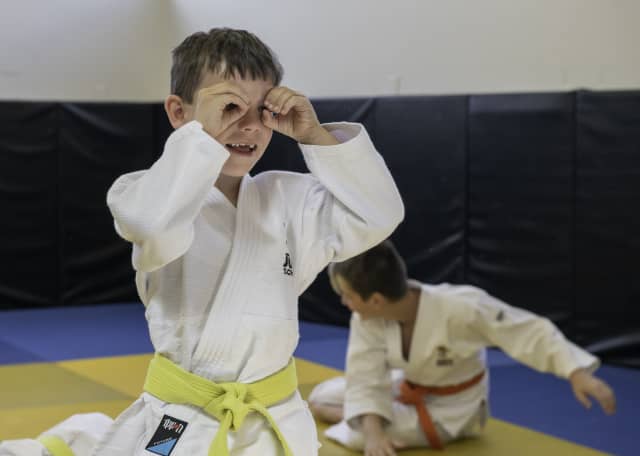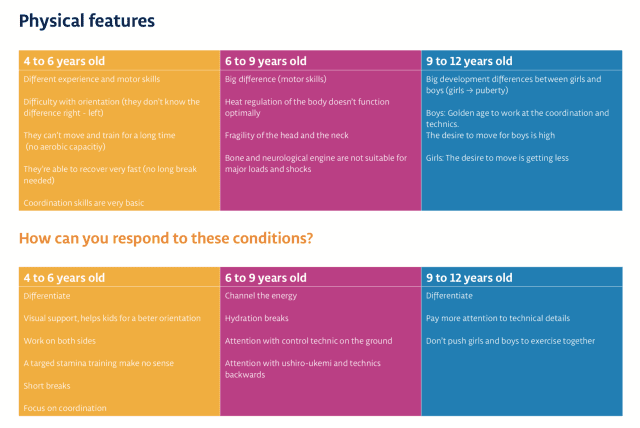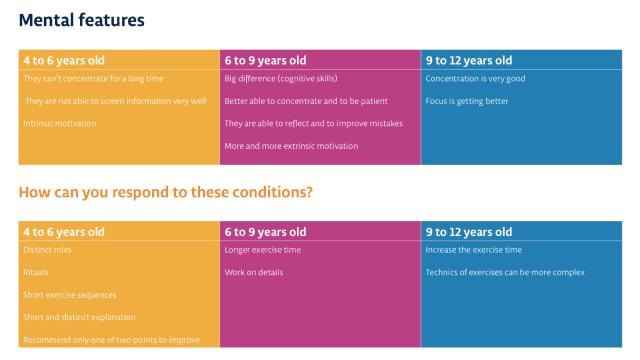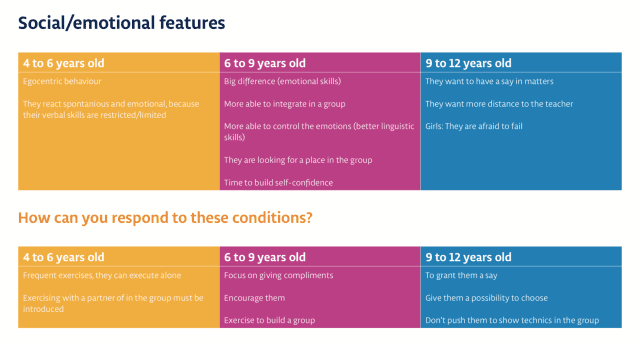Age Groups
Judo is not learned the same way at 4 or 12 years old. It’s important to split the children into age groups, because the children will have different stages of development on physical, mental and social/emotional level. It’s best to adjust your method and lessons according to the characteristics of the age group.
When you teach children, it’s important to know the principles and characteristics of the children. In other words, you need to know how to act and talk with each group of children. An easy example is that children of 4 to 5 years old, are not able to concentrate very long. As a result, lessons are not more than 45 minutes and exercises are not too long.
Taking the principles of age characteristics into account, you need to understand which goals are achievable.
This will translate into a different annual program, where the children can learn different technical moves (both judo and non-judo). Some techniques might be dangerous for the younger children, but are suitable for the older ones. Also the younger children will not know all the concepts of moving yet. You need to be able to reflect on this and adjust your program so it’s suitable for the age group.
The only thing that will be the same for each age group, is the moral code (the values of judo). From the moment you step on the tatami with the children, you will have to embrace/increase the values in each lesson of your cycle. You are the ambassador of the values. Each time you speak or show an exercise, realise that you are the example for the children.
Below you can find an example from 3 different age categories. It will tell you the resume of the characteristics of each age group and how to respond to that. Of course, you are free to adjust to your reality. You can find more information about the age groups in our guidelines.




